The priorities of our tour guides are to provide a safe, fun, and educational experience for all participants in tours. They are very familiar with the walking trails at the tour locations and knowledgeable regarding a multitude of points of interest and topics of discussion.
Guides will provide information regarding plant species, including how to identify them and how they have been used traditionally as food sources and for medicinal purposes as well describing those that are unique and rarely occurring.
They will discuss animal species which inhabit the areas throughout the seasons, locating them whenever possible, and discuss the historical aspects of the sites which you are visiting.
Blue Heron Park
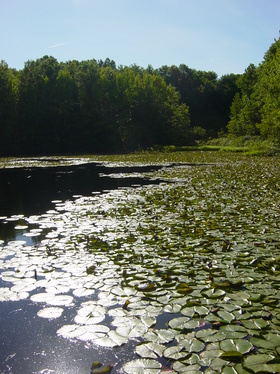
Blue Heron Park, located in Southern Annadale is a sprawling 250 acres of natural meadows, ponds, streams, and woodlands. It is an area which is perfect to commune with nature and home for various forms of plant and and animal life throughout the year.
Observe a diverse range of wildflowers, a multitude of bird species, and many plants which have been used traditionally as sources of food and medicine in the six ponds and numerous trails which comprise the park.
The park is home to such plants as spotted pipsissewa, garlic mustard, wild chives, multiflora rose, sassafras, spicebush, lowbush blueberry, wild strawberries, blackberries, and raspberries.
Observe a diverse range of wildflowers, a multitude of bird species, and many plants which have been used traditionally as sources of food and medicine in the six ponds and numerous trails which comprise the park.
The park is home to such plants as spotted pipsissewa, garlic mustard, wild chives, multiflora rose, sassafras, spicebush, lowbush blueberry, wild strawberries, blackberries, and raspberries.
Long Pond Park
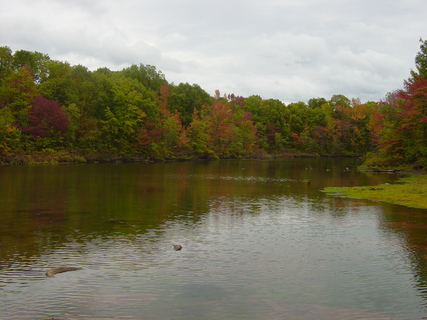
Picturesque Long Pond Park has more in common with the Catskills or the Poconos than anywhere within New York City. It is an uncommon mixture of woodland and wetland, providing a peaceful home to a diverse range of wildlife. Its beauty is easily appreciated and is one of the most pristine natural areas in all of New York, covering over 100 acres.
It is located in one of the least densely populated areas of New York City and serves as a living classroom for young and old alike, providing a recreational environment hearkening back to the Island’s rural past.
Long Pond is a home to plants such as plantain, honey locust, lowbush blueberries, cleavers, blackberries. It also has a thriving white tailed deer population, many sunfish inhabiting the pond, great horned owls, Fowler's toads, and the occasional blacksnake.
It is located in one of the least densely populated areas of New York City and serves as a living classroom for young and old alike, providing a recreational environment hearkening back to the Island’s rural past.
Long Pond is a home to plants such as plantain, honey locust, lowbush blueberries, cleavers, blackberries. It also has a thriving white tailed deer population, many sunfish inhabiting the pond, great horned owls, Fowler's toads, and the occasional blacksnake.
Mt. Loretto
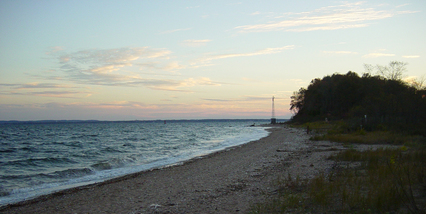
With its bluffs nestled 85 feet above sea level, Mt. Loretto is home to beautiful vistas of the shore facing Prince's Bay. The shoreline is home to some of Staten Island's most unique natural artwork as well as a diversity of plantlife. Nestled in the meadow's hills are japanese honeysuckle, smooth sumac, butterfly bush, and wild blackberries. In other areas, wrinkled roses abound, mullein blossoms, and black locust trees dot the landscape.
Rolling meadows and salt ponds provide for picturesque panoramic photography as well as a serene home for a variety of salt water and freshwater wildlife. Mt. Loretto is a habitat for harbor seals, monarch butterflies, wild rabbits, muskrats, ospreys, and on unique occasions bald eagles.
Rolling meadows and salt ponds provide for picturesque panoramic photography as well as a serene home for a variety of salt water and freshwater wildlife. Mt. Loretto is a habitat for harbor seals, monarch butterflies, wild rabbits, muskrats, ospreys, and on unique occasions bald eagles.
Acme Pond & Wolfe's Pond
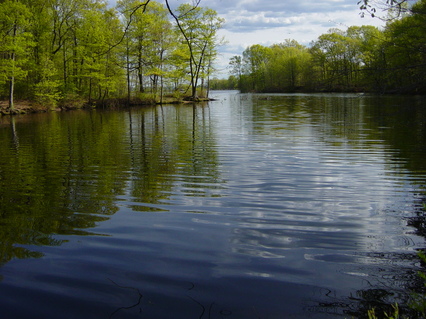
Surrounding Acme Pond is some of the most
impressive yet least known woodland in New York City. Throughout the woods, vernal ponds appear in the
spring, when snow melts and rain accumulates, only to evaporate in the summer
heat. A variety of birds, reptiles, amphibians, and fish make their home at Acme Pond.
Wolfe’s Pond Park contains mature upland woods, swamp forest, open marsh, ponds, and shoreline on Raritan Bay, making it one of the most diverse parks in the city.
Deep ravines nestled between trails provide a home for thriving plant life, including sassafrass, blueberries, daffodils, periwinkle, and bamboo, amongst others.
A few moments in the tranquil atmosphere of these ponds will provide for a most memorable experience.
Wolfe’s Pond Park contains mature upland woods, swamp forest, open marsh, ponds, and shoreline on Raritan Bay, making it one of the most diverse parks in the city.
Deep ravines nestled between trails provide a home for thriving plant life, including sassafrass, blueberries, daffodils, periwinkle, and bamboo, amongst others.
A few moments in the tranquil atmosphere of these ponds will provide for a most memorable experience.
Conference House Park
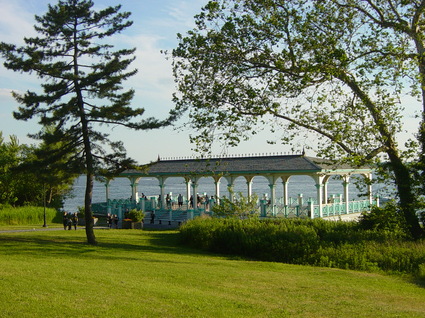
The Conference House is a diversified coastal ecosystem with equally interesting cultural and historical significance. Its winding trails are a habitat for a variety of rare coastal plants and trees, many of which have long-standing medicinal and edible usage.
It is an important migration area for many bird species and aquatic life. The red clay bluffs and the coastline at the southernmost tip of the state of New York overlook Raritan Bay and provide many beautiful vista points.
It is an important migration area for many bird species and aquatic life. The red clay bluffs and the coastline at the southernmost tip of the state of New York overlook Raritan Bay and provide many beautiful vista points.
Lighthouse Hill
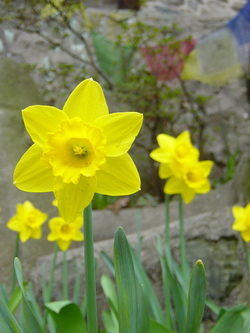
This is a unique tour experience as it
offers a glimpse at a diverse collection of ecologically unique areas
and cultural points of interest located on Lighthouse Hill in Staten
Island.
One point of interest on the tour will be a visit to the Jacques Marchais Center of
Tibetan Art, the first example of Himalayan-style architecture in the
United States and the largest collection of Tibetan art outside of
Tibet. The museum currently has a display featuring the 8 Auspicious
Symbols of Buddhism.
The tour winds its way around Richmond Creek and offers much in the way of nature observation. Local plant species thrive, including Skunk Cabbage, Lesser Celandine, Japanese Knotweed, Lesser Periwinkle, Red Raspberry, and more. The area is a habitat for a variety of animal species, including an ever-increasing white-tailed deer population, wild rabbits, hawks, turkey vultures, and many more.
Also to see are the Lighthouse, of which Lighthouse Hill is named, and hilltop views, overlooking Historic Richmondtown as well as the Frank Lloyd Wright House.
There is an admission fee for the Center of Tibetan Art in addition to the cost of the tour. The costs are Adults - $6, Seniors (60 and over)/Students - $4, and Children under 6 - Free.
The tour winds its way around Richmond Creek and offers much in the way of nature observation. Local plant species thrive, including Skunk Cabbage, Lesser Celandine, Japanese Knotweed, Lesser Periwinkle, Red Raspberry, and more. The area is a habitat for a variety of animal species, including an ever-increasing white-tailed deer population, wild rabbits, hawks, turkey vultures, and many more.
Also to see are the Lighthouse, of which Lighthouse Hill is named, and hilltop views, overlooking Historic Richmondtown as well as the Frank Lloyd Wright House.
There is an admission fee for the Center of Tibetan Art in addition to the cost of the tour. The costs are Adults - $6, Seniors (60 and over)/Students - $4, and Children under 6 - Free.
